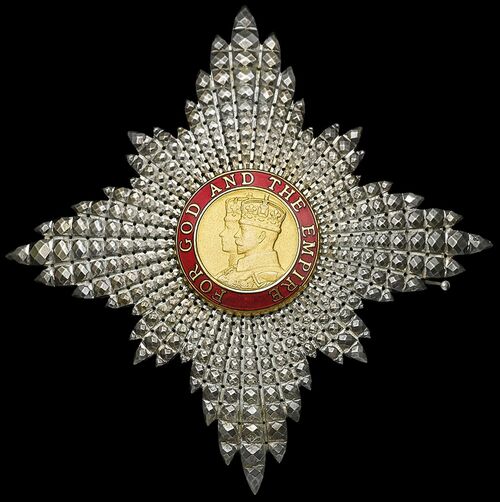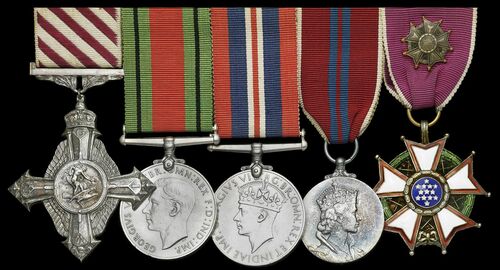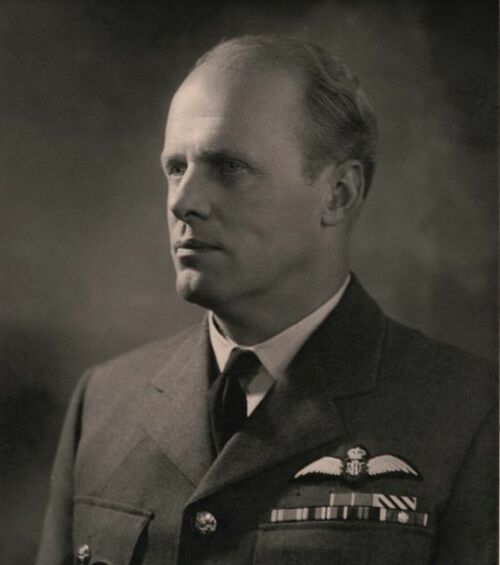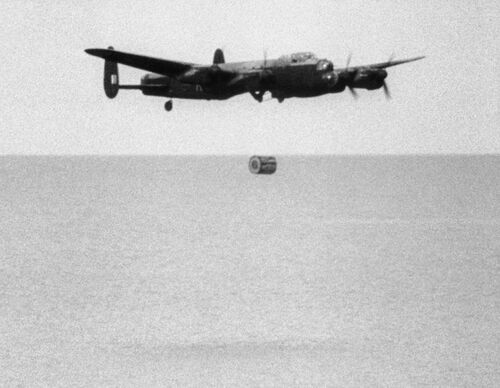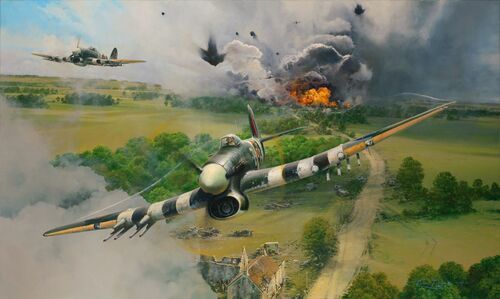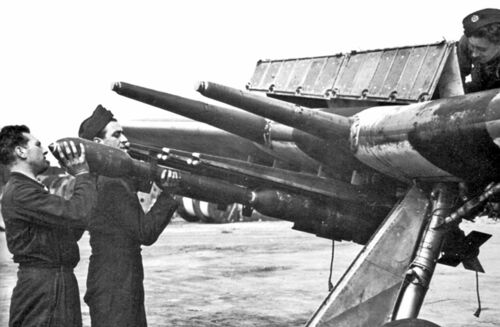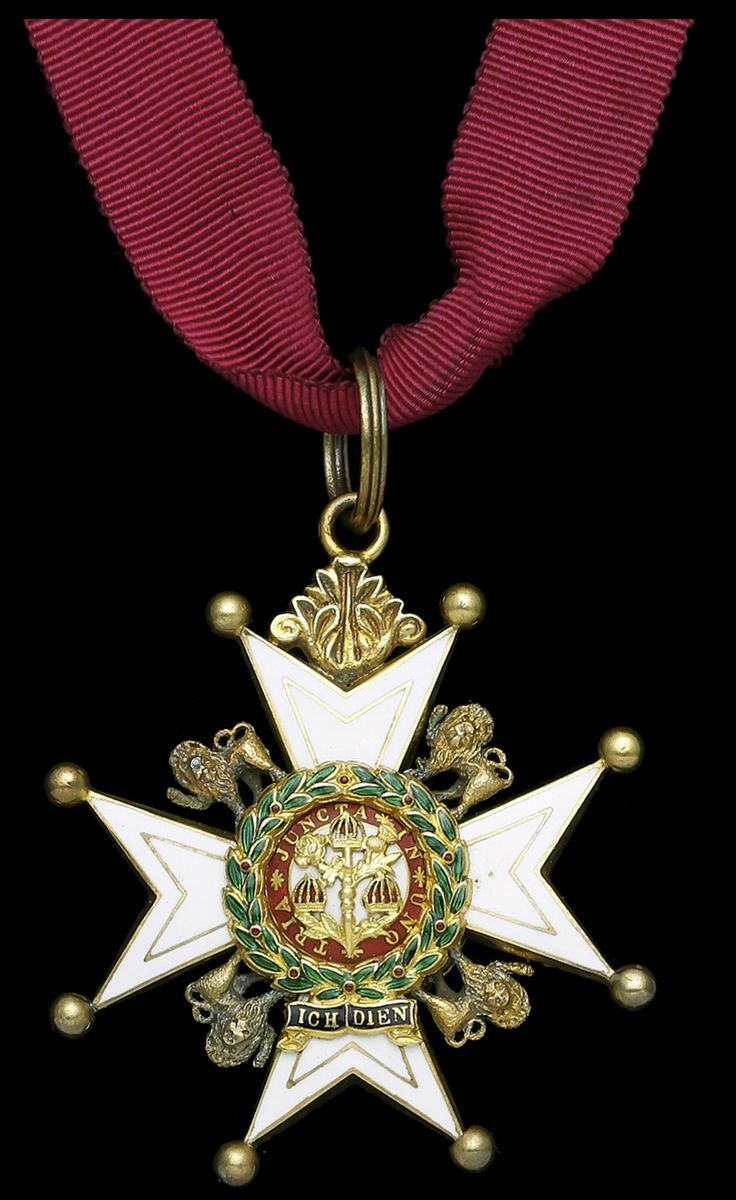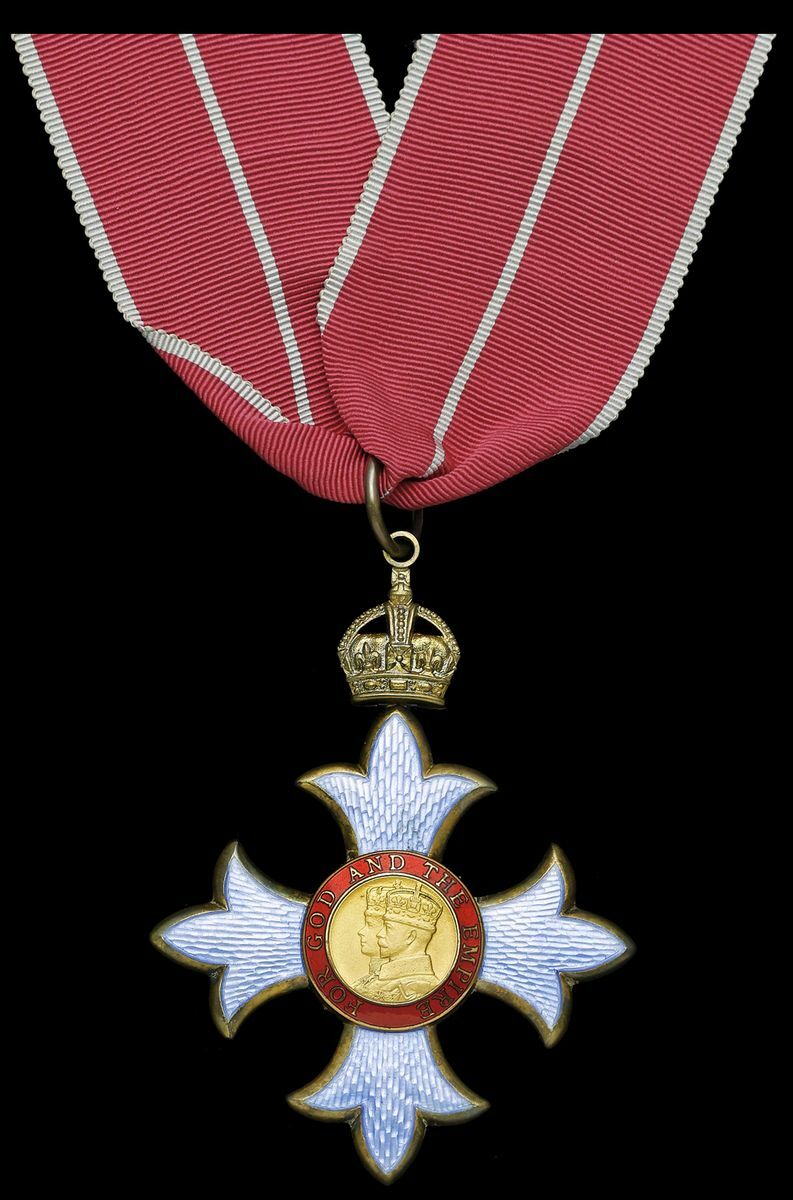Auction: 23002 - Orders, Decorations and Medals
Lot: 122
A remarkable 'Operation Chastise innovator's' K.B.E., C.B., 1944 A.F.C. group of seven awarded to Air Marshal Sir J. D. Baker-Carr, Royal Air Force, who was consulted by Barnes Wallis on the development of the bouncing bomb and later proved instrumental in developing Rocket Projectors for ground attack, even going so far as to become an expert in their use
The Most Excellent Order of the British Empire, (K.B.E.), 2nd Type, Knight Commander's set of Insignia comprising neck Badge, silver-gilt and enamel, breast Star, silver and enamel, in its Garrard & Co. case of issue; The Most Honourable Order of the Bath, Military Division, Companion's neck Badge, silver-gilt and enamel, in its Collingwood case of issue; Air Force Cross, G.VI.R., the reverse officially dated '1944'; Defence and War Medals 1939-45; Coronation 1953; United States of America, Legion of Merit, mounted as worn where applicable, good very fine (7)
Provenance:
Gorringes, March 2022, when sold on behalf of the family.
K.B.E. London Gazette 2 June 1962.
C.B. London Gazette 13 June 1957.
A.F.C. London Gazette 8 June 1944. The official recommendation states:
'This officer has been in charge of the Rocket Section of the Directorate of Armament Development since August, 1942. He had been mainly responsible for the successful introduction of R. P. installations in aircraft. Apart from his great technical knowledge Group Captain Baker-Carr has spared no effort to become a first-class shot and to put in as much flying time as possible. In 1943 he did as much flying as pilots flying regularly at the A. & A.E.E.'
United States Legion of Merit London Gazette 9 September 1947.
John D'Arcy Baker-Carr was born at Hythe, Kent on 13 January 1906, the son of Brigadier-General Christopher D'Arcy Bloomfield Saltern Baker-Carr and Sarah de Witt Baker-Carr (nee Quinian). His father was extremely notable during the Great War having founded the Machine Gun Corps and later been instrumental in the foundation of the Tank Corps. In his youth Baker-Carr was at school in Knightsbridge where he was witness to the zeppelin raids over London and perhaps more importantly on an impressionable child, the R.A.F. fighter pilots efforts to stop them. Entering Harrow in 1919 he was not to study there for long before his father opted to move the family to East Africa, where they settled near Mount Elgon.
The young Baker-Carr was unlucky to catch both Malaria and Black Water Fever in quick succession and found himself sent home to recover being going to America to continue his education. He attended Philips Academy, Massachusetts, the Philips Academy, New Hampshire. Having graduated he enrolled with the Massachusetts Institute of Technology to study Chemical Engineering, though he also gained a good grounding in Physics and Maths.
Hearing on the wireless that the Royal Air Force was offering temporary short service commissions Baker-Carr applied for one. He was commissioned Pilot Officer on 15 March 1929 and posted to R.A.F. Uxbridge before being posted to No. 5 Initial Flying Training School at R.A.F. Sealands, Wales. Here he was trained by another famous face, Group Captain Percy Bernard, Earl of Bandon. Upon the completion of his training on 9 April 1930 Baker-Carr was posted to No. 32 Fighter Squadron.
Advanced Flying Officer on 9 July 1931, an effort by coastal command to increase their numbers saw Baker-Carr posted to the Seaplane Training Squadron at Calshot, Hampshire. Having qualified on 15 March 1932 he joined 201 Squadron briefly before transferring to 203 Squadron in Basra. Notably Baker-Carr made the trip to his new posting with a replacement aircraft, the S8/8 Rangoon Seaplane. Here the Squadron co-operated with the Royal Navy in suppressing piracy and gun running in the Persian Gulf.
Returning to Britain Baker-Carr was promoted Flight Lieutenant on 15 September 1934 and before undertaking an armaments course at R.A.F. Eastchurch. The course certainly appealed to him as he immediately took up a roll as Armament Officer at R.A.F. Andover on 19 January 1935. He gained valuable experience in this role but all too soon was posted away to undertake a position at Headquarters No 3 (Bomber) Group at R.A.D. Mildenhall, West Suffolk. His role here mainly related to training but Baker-Carr did take the opportunity to fly a prototype Bristol Blenheim bomber. Promoted Squadron Leader on 1 June 1938 he was posted to the Woolwich Arsenal as a liaison with the Army relating to matters of research and development. This role also saw him attached to R.A.F. Hendon, allowing him to fly between factories and research the techniques and materials being used in Ordnance production. It was during this posting that Baker-Carr developed his understanding of fuses.
Still at Woolwich when the Second World War began his knowledge of weaponry ended any hope of being drafted into an active service squadron. Transferred to the Technical Branch on 24 April 1940 he was further promoted Wing Commander on 1 December that same year. It was due to his specialism in aerial armaments and fuzes that he was to become involved in one of the most remarkable creations of the war, the bouncing bomb. Barnes Wallis conferred with Baker-Carr regarding the construction of such a device and even took him to a meeting of the Aerial Attack on Dams Committee to expound of the theory.
Advanced Group Captain on 1 June 1942 he was soon drawn into another, slightly less unconventional project- fitting rockets to aircraft. Baker-Carr was transferred from the Technical Branch to a special branch within the Ministry of Supply and Aircraft Production look at specifically this issue. Early tests proved difficult, the size of the weapon meant that speed must be kept precise and aiming also proved to be something of a game of trial and error. During a test flight Wing Commander Alexander Bennett was killed when a fault on a rocket fuse blew off one of his wings. Baker-Carr immediately volunteered to undertake the next flight. Taking off in a Hawker Hurricane with a re-designed set of rockets he was able to successfully destroy the train laid out as a target. Lord Beaverbrook said of Baker-Carr's achievement:
'The man most responsible for the development of the Rocket Projectile [...] is Group Captain John D'Arcy Baker-Carr [...] whose "backroom boys" at the Ministry of Aircraft Production have worked unremittingly with him'
The weapons were put to good use in the Falaise Gap and also used heavily by Coastal Command. A Separate Little War - The Banff Coastal Command Strike Wings refers, stating:
'This was following the successful trails on the 28th September 1944 and in mid-October of test flights at Hatfield with rocket rails under the wings, using the HX 918 against targets on Ashley Range in the New Forest. Three Mosquito Squadrons therefore underwent intensive rocket projectile (RIP) training at a range near RAF Tain on the Moray Firth coast, where a RAF launch anchored target markers off Macduff. This new weapon, developed for its present purpose of attacking vessels by Group Captain John D'Arcy Baker-Carr, made its first operational strike on the 26th October.'
Posted to the United States and Canada Baker-Carr made a tour of these nations demonstrating the capabilities of the new weapon and conducting further trails. Appointed Deputy Director of Personnel and Postings at the Air Ministry on 1 July 1947 he was awarded the Legion of Merit for his work the same year. The next year Baker-Carr became Director of Armament Research and Development at the Ministry of Supply.
Advanced Air Commadore on 7 June 1951 he posted a 30-page report on the development of the peacetime and wartime establishments of the R.A.F. The report was well received and he moved onto his next appointment as Air Officer in Command of R.A.F. St. Athan, Wales. From here Baker-Carr joined Headquarters Fighter Command Communications Squadron at R.A.F. Bovington as Senior Technical Officer with a promotion to Air Vice-Marshall on 8 October 1956. His final promotion of Air Marshall occurred on 1 February 1962 while Air Officer Commanding No. 41 Group.
Baker-Carr's career continued with an appointment as Controller of Engineering and Equipment. This in turn gave rise to a number of separate duties including sitting upon a council to decide the future of the R.A.F. College, Cranwell and the Technical College, Henlow. He was also involved in investigating and solving the problem of engine failure in the Gloster Javelin jet aircraft. Baker-Carr finally retired on 1 February 1964, settling at Thatchwell Cottage, King's Somborne, Hampshire. He died on 9 July 1998, preceding his wife by three years. Baker-Carr's medals and decorations passed to his wife's nephew, Lieutenant-Colonel John Darlington, Royal Engineers. Upon his death without issue they were auctioned with them at Gorringes; sold together with an original American Pilots Badge and good archive of copied research including a list of records held in the R.A.F. Museum, Hendon, Birth and Death Certificates, obituaries from the Telegraph and The Times, signed photograph of Barnes Wallis, correspondence from such figures as Clementine Churchill, Barnes Wallis and Air Chief Marshal the Earl of Bandon, minutes of an A.A.D. meeting and Log Book entries. His original Flying Log Books are held at the R.A.F. Museum, Hendon.
For his miniature dress medals, please see Lot 135.
Subject to 20% VAT on Buyer’s Premium. For more information please view Terms and Conditions for Buyers.
Sold for
£3,500
Starting price
£3200



